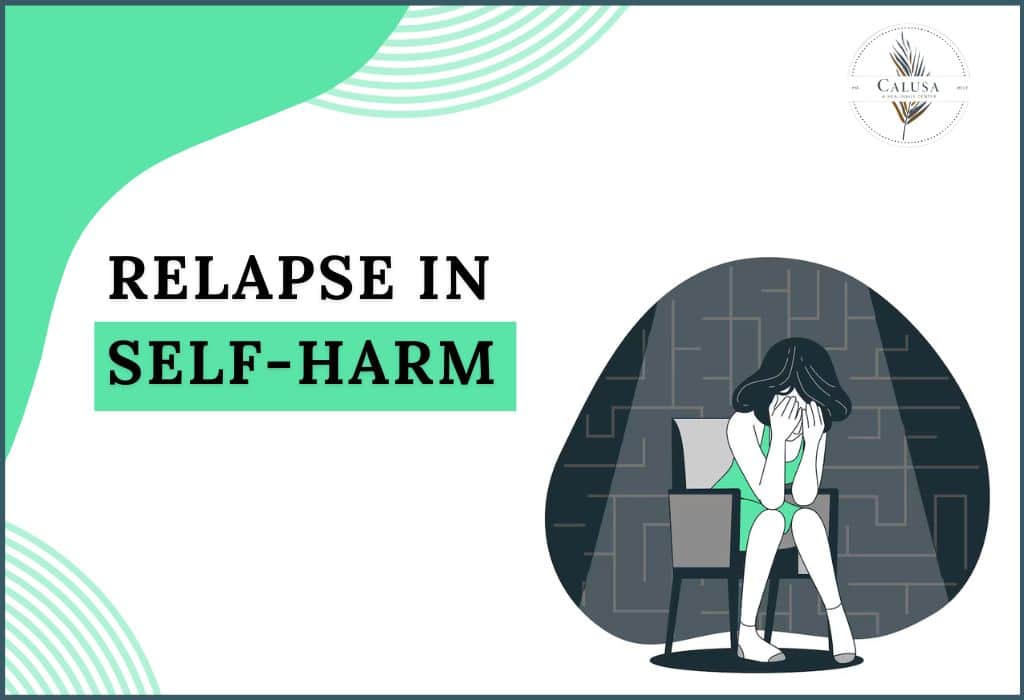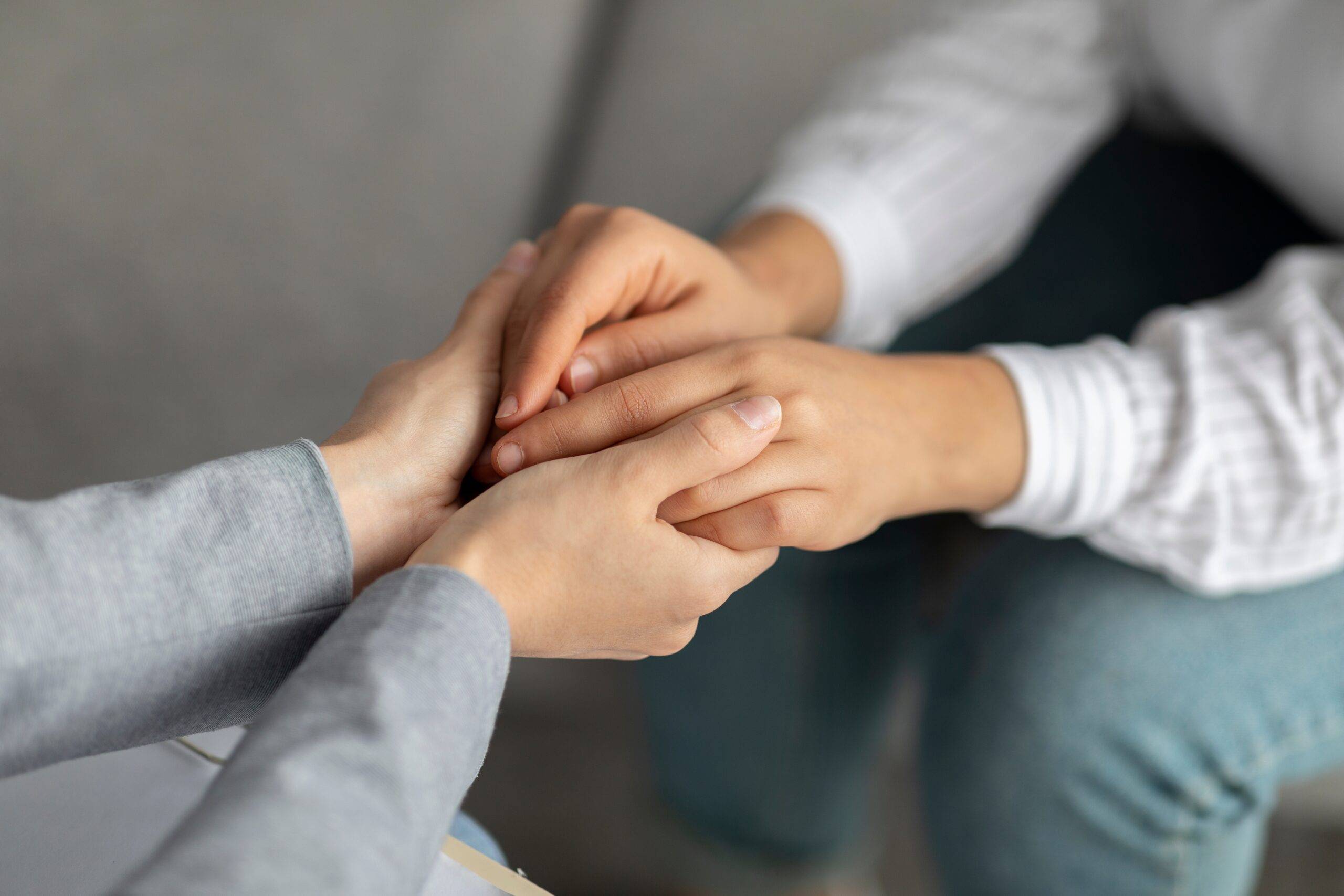It can be challenging for teens and young adults as well as for parents whose children have gone through a relapse in self-harm. Relapse feels discouraging, so it’s important to remember that recovery is achievable. It needs proper guidance and support.
Addressing relapse in self-harm is important. It helps prevent the physical and emotional damage caused by these behaviors. By responding to relapses promptly, caregivers and we can provide the necessary support and interventions. This support can help the individual regain control and continue their journey towards recovery.
In this blog, we are going to put helpful information about the nature of relapse in self-harm. We will identify key warning signs and discuss different types of self-harm. By understanding these aspects, parents and caregivers can better understand what essential help they can provide to support and encourage their children in the recovery process.
What is Self-harm Relapse?
Relapse in Self-harm is a situation in which someone who has previously stopped self-harming returns to the harmful behaviors. These can occur for multiple reasons, such as:
- Increase stress
- Emotional Triggers
- Lack of effective Coping mechanism
Relapse does not mean failure. Self-harm in relapse is a natural part of the healing process. Recovery is not always a straightforward journey. Experiencing setbacks is common. Approaching the relapses with better understanding and compassion can give good results. Guit and shame can disturb the essential results.
Common reasons and triggers for relapse
It is important to be aware of the warning signs that may include
- Not engaging in social activities and relationships
- Drastic changes in mood and behavior
- Scars or injuries
If you see these above signs in your loved one or yourself, seek support and address the relapse as soon as possible.
Types of Self-Harm
People often try to hide their self-harm due to the feeling of shame and fear of getting judged. They cover their skin and avoid discussing their struggles. Those who self-harm may not seek help on their own, so close family and friends may need to take the initiative.
If you notice someone engaging in self-harm, try to handle the situation with care and empathy. It’s important to understand that self-harm can also involve suicidal behavior, such as overdosing.
These are various ways individuals might intentionally harm themselves, including:
- Cutting or burning their skin
- Punching or hitting themselves
- Poisoning themselves with pills or toxic chemicals
- Misusing alcohol or drug
- Deliberately starving themselves or binge eating
- Over-exercising
Signs of a Self-Harm Relapse
It can be challenging to identify when a loved one or a friend is experiencing a relapse in self-harm. These actions are carried out in private. The signs and symptoms will vary depending on the method used but may include:
Behavioral Symptoms
- Wearing long pants and long-sleeved shirts, in hot weather as well.
- Referring to injuries as an accident or clumsiness.
- They are isolating themselves.
- Struggle to uphold a friendship or a relationship.
- Keeping sharp objects for self-injury readily available.
- Withdrawing from previously enjoyed activities.
- Exhibiting unpredictable, impulsive behaviors.
Physical Signs to watch for
- Scars
- Fresh scratches or cuts
- Bruises
- Broken bones
- Patches of missing hair
Cognitive Symptoms
- Continuous questions about personal identity
- Feeling of helplessness
- Worthlessness
Psychosocial Symptom
- Emotional numbing
- Emotional instability
- Mood Swings
- Depression
- Increased anxiety, particularly when unable to self-injure
- Guilt
- Shame
- Disgust
How to help with Self-harm relapse
It is important to manage the underlying emotional distress in young adults. This distress, whether stemming from depression, anxiety, trauma, or other mental health issues, must be healed. Focus on helping the people who are going through self-harm relapse to confront these challenges.
It is not always possible to avoid triggering distress. If you know someone who is going through a relapse in self-harm, consider these guidelines to help:
Use Distraction Techniques
- Engage in activities like calling a friend for a lighthearted chat or taking a shower.
- Get physically active by dancing, walking, exercising, or practicing yoga.
- Watch a comedy show or something that brings inspiration.
- Drink water or start organizing a project or activity.
Try Calming techniques to reduce stress.
- Spend time with a pet or take a relaxing bath with a good book.
- Listen to music you enjoy or practice meditation and mindfulness exercises.
- Use guided imagery or hold a grounding object like a smooth rock.
Express yourself creatively
- Write in a journal, draw, paint, make music, write poetry, or play an instrument.
Change your environment
- Go outside, move to a different room, or engage in simple tasks like washing dishes.
- Visit a park or go shopping to shift your surroundings.
Connect with others and break the silence.
- Have an honest conversation with a trusted person about what you are experiencing.
- Consider sharing your journey on social media or a blog to reduce stigma.
- Join a support group for self-harm recovery, either in person or online.
- Ask loved ones to write supportive notes or create a chat to share positive messages and stories.
These strategies can provide essential support during challenging moments and help navigate the path to recovery from self-harm.
Conclusion
Understanding the challenges of relapse in self-harm requires understanding, empathy, and proactive support. Recognizing the signs, knowing the types of self-harm, and applying effective intervention strategies are essential steps toward fostering recovery.
For parents and caregivers, your role is crucial for the recovery of your loved one. Stay vigilant, offer support, and encourage open communication. By doing so, you can help your loved ones regain control and build a healthier future.
Don’t hesitate to seek professional help from Calusa. The road to recovery is challenging with the right resources and support, it’s possible to overcome relapse in self-harm.
FAQs
Que: What Should I Do If I Relapse?
Ans: Stay calm and remember that relapse is a common part of the recovery process. Reach out to a trusted friend or family member. Reflect on what may have triggered the relapse to understand and manage it better in the future. Practice self-compassion and avoid self-criticism. Engage in healthy coping mechanisms like exercise. Creative hobbies, or mindfulness practices. Seek professional help to develop a personalized plan to address and manage relapses.
Que: How Can I Help a Loved One Who is Self-Harming?
Ans: Handle the situation with care and understanding. Show empathy and avoid judgment. Encourage open communication and create a safe, non-judgmental space for them to share their feelings. Educate yourself about self-harm to better support them. Suggest professional help and assist in finding a therapist or support group.
Que: What Are the Best Resources for Support and Information?
Ans: Mental health professionals, such as therapists and psychiatrists, offer personalized support and treatment. Support groups, both in-person and online, provide community and shared experiences.










